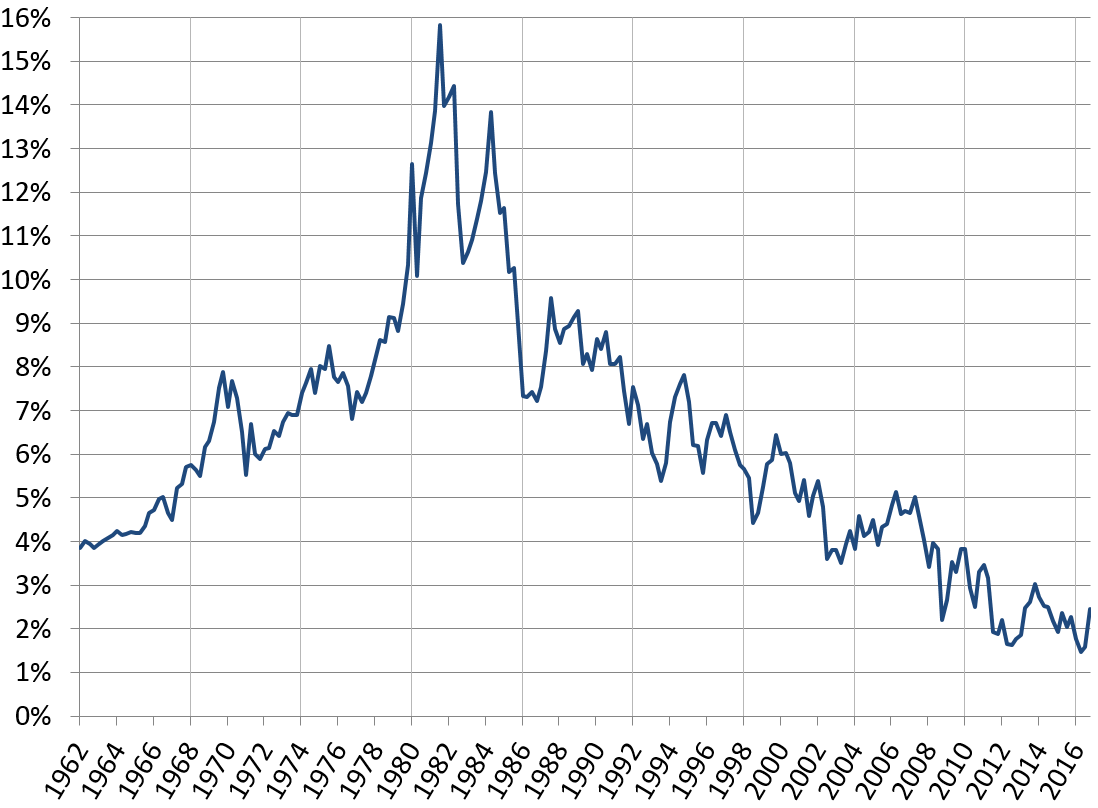It's Lonely at the Bottom

As the U.S. stock market ascends to new heights and hogs all the attention, these days it's easy to forget how low interest rates have fallen and perhaps more importantly, why you should actually care! While falling interest rates were great for mortgage refinancing and those who bought 30-year treasury bonds in 1987, future opportunities to refinance a 30-year mortgage below 4% won't be common and good luck reinvesting the cash the Treasury is about to wire to your account at anything close to the rate you were getting. Not surprisingly, many investors are leaving the low yielding fixed income markets and piling more of their savings into stocks. It's enough to make anyone still methodically investing in bonds feel a bit lonely.
There are lots of different kinds of interest rates (e.g. treasury, corporate, municipal, credit card, student loan, mortgage, loan shark...), but their most basic definition is uniform: an interest rate is the amount of money a lender requires to be paid in exchange for letting someone else use their money. In other words, interest rates reflect the cost of money, and these days, money is cheap. Extremely cheap, but it hasn't always been this way.
Interest rates go up and down, typically with book ends on the range. If the rate goes too high, borrowers will stop borrowing, because it costs too much. If the rate goes too low, lenders will stop lending, because they aren't getting paid enough to take the risk of not getting their money back. When lenders start to worry that inflation is picking up, they charge more in interest for fear that future money paid back to them won't be worth as much. When a borrower has a great credit score, they negotiate harder for a lower interest rate that reflects their lower default risk. The precise movements of interest rates and the speed in which they move are driven by more nuanced forces, but the fundamental nature of the debt market boils down to haggling over the cost of using other people's money.
Let's look at one particular kind of debt to help benchmark this idea: 10-Year U.S. Treasuries, which are direct obligations of the United States federal government. There is a tacit consensus among investors that the U.S. government has the lowest probability of not paying back its debt (the 2011 debt ceiling crisis and subsequent downgrade notwithstanding). Given this belief, the interest rate on the "10-Year" sets the standard for nearly every other kind of debt.
At the end of January, if you bought such a bond (i.e. you are the lender), you would receive an interest rate of ~2.45% per year (Source: Bloomberg) over the lifetime of that debt between a combination of regular interest payments and the large final payment on the maturity date. As you can see from the chart below, that interest rate has changed quite a bit over time.

Some of you may remember the extremely high interest rates of the early 1980's. You certainly would if you applied for a mortgage back then! Since then, interest rates have had their swings, but the clear trend has been down, with the lowest point for this benchmark being mid-2016. Practically speaking, there is a minimum for how low this can go, and 2012 and 2016 likely showed us where the market puts the floor for the interest rate on this particular type of debt.
Whether interest rates move sideways or up (and if up, how fast?) from here is perhaps a debate best left for another day. Still, markets are clearly traversing the bottom of the interest rate valley and probably can't go farther down in any meaningful way as compared to the past 35 years. If interests move meaningfully upward, however, it is certain to have broad collateral repercussions for everyone.
On the investing side, securities that are rate dependent will decline in value as interest rates rise, but not owning bonds doesn't insulate you from this market shift. Like sugar in the food chain, interest rates are a trace element in connecting just about everything in our society. The lack of beneficial mortgage refinancing opportunities mentioned earlier will certainly upend a generation's-long financial planning tool. Your city will have a harder time balancing the budget when they have to pay higher interest payments on new debt that they issue; get ready for higher water rates, property taxes, and parking ticket fines. While a car lease might not feel like a car loan, it is just that, and you can expect your future leases to have higher monthly payments as rates go up.
It might be lonely for those systematically investing in bonds these days (and there are good reasons to do so!), but we'll all be in good company when rates eventually rise.
Andrew Stewart, CFA is a Senior Portfolio Manager at Exchange Capital Management. The opinions expressed in this article are his own.
Comments
Market Knowledge
Read the Blog
Gather insight from some of the industry's top thought leaders on Exchange Capital's team.
Exchange Capital Management, Inc.
110 Miller Ave. First Floor
Ann Arbor, MI 48104
(734) 761-6500
info@exchangecapital.com




